The exhibition at Tate Modern, Expressionists: Kandinsky, Münter and the Blue Rider, is wonderful. I enjoy many exhibitions and take pleasure in looking at many works of art, but I am in awe of der Blaue Reiter, the group of young men and women who pushed art in new and exciting directions in the three years immediately preceding the First World War. This exhibition pulls together many of their masterpieces including several from the Lenbach House museum in Munich which I visited some years ago.
Collectively this talented and original movement broke away from traditional approaches. The exhibition emphasizes their radicality and also the international dimension of the transformation they brought to the art world. Europe was on the brink of a devastating conflict, but the extended group, channeled the cooperative creativity of artists from Russia, the part of the Russian Federation that is today Ukraine, America and several west European countries. The wider group included, to name a few, Paul Klee, Lyonel Feininger, and both Delauneys, artists I love but here I am focusing on the core group: Kandinsky and his partner Gabriele Münter, Jawlensky and his partner Marianne Werefkin, Franz and Maria Marc, and August Macke. This group of friends flourished for a few dazzling years in Bavaria, notably in Murnau where Münter bought a house.
Bold vibrant colours and a revolutionary approach to composition are a shared feature of their works. The exhibition highlights how the influence of local Bavarian traditional technique of reverse glass painting, marked by strong black outlines and flat planes of colour, was instrumental in freeing up their ideas. Kandinsky was also influenced by memories of his homeland’s religious iconography and folklore art. His work was the most radical and the closest to what we would later term abstract art. Love of colour, for him imbued with meaning and what he felt was a spiritual dimension, soars from his work.
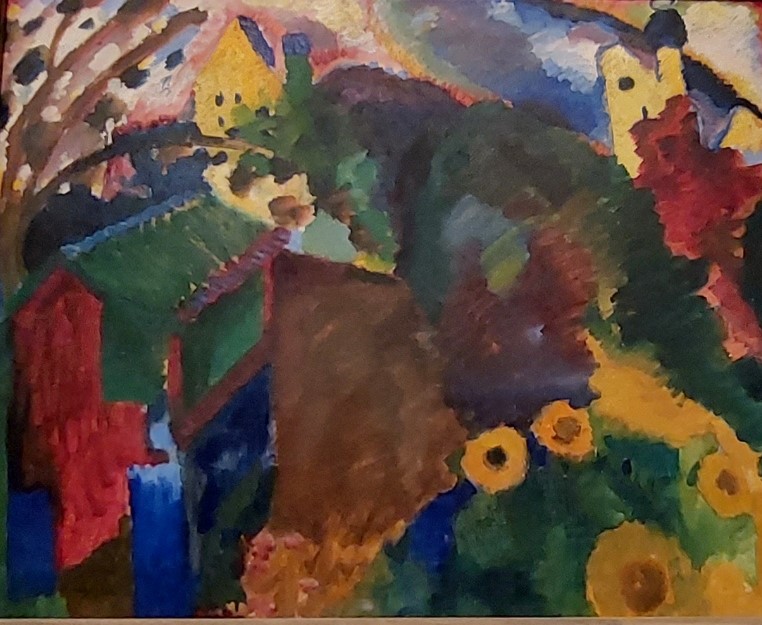
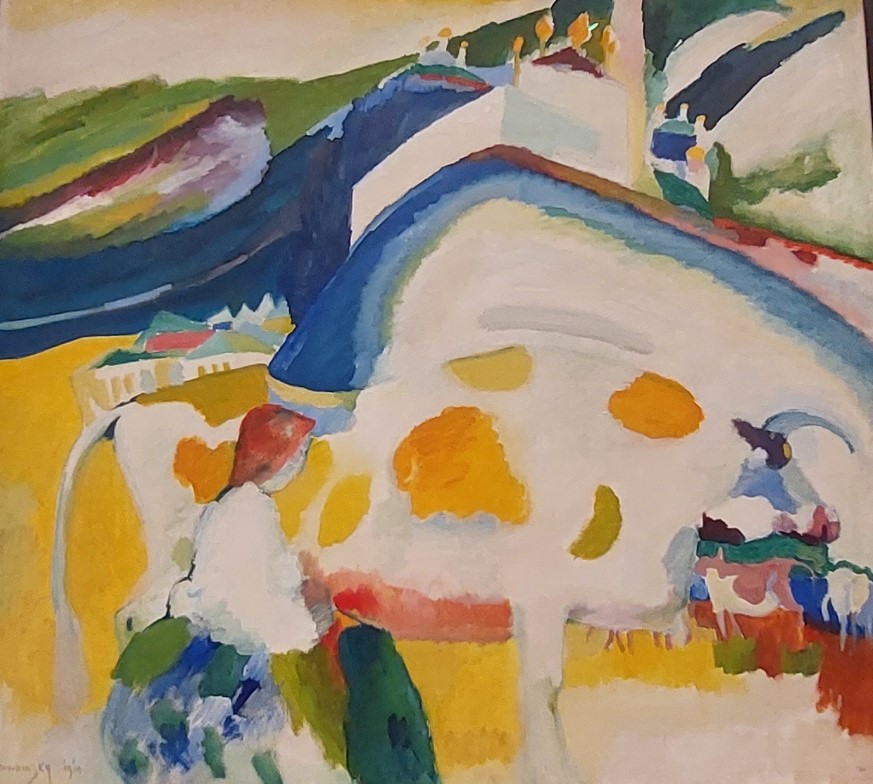
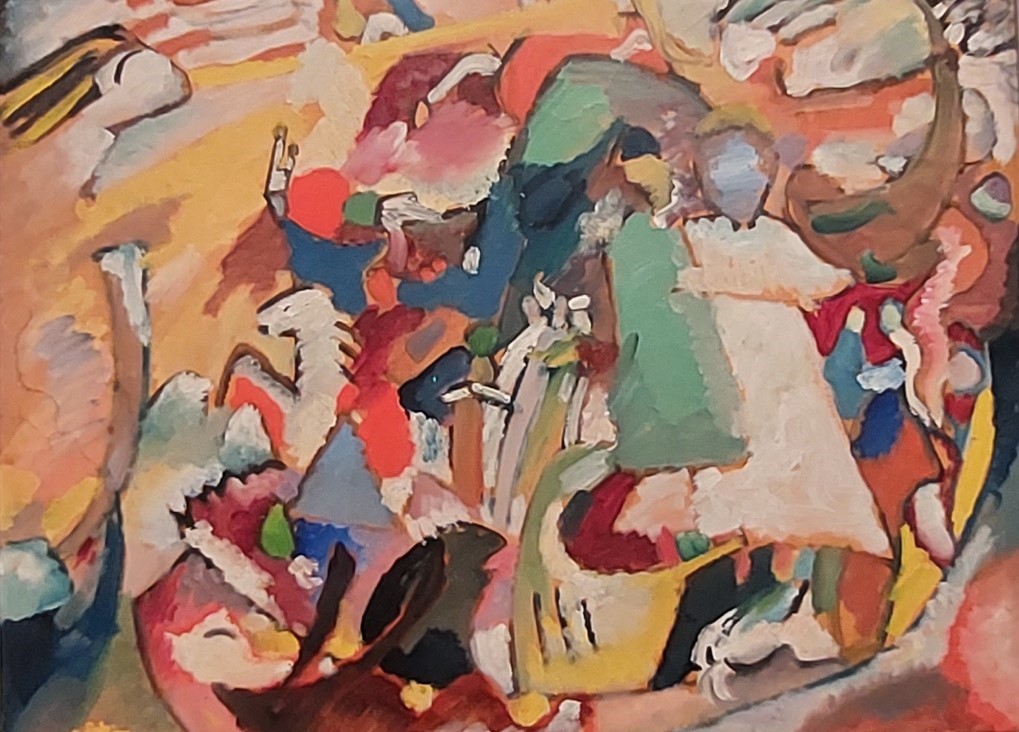

Kandinsky stands out because of this development in an abstract direction. In other parts of Europe other artists were arguably also experimenting with more abstract compositions like the Lithuanian artist M.K. Čiurlionis or Hilma Af Klint, and using their art to reflect faith-related or intellectual concepts. Kandinsky’s work, however, dissolving his subject in fluid, vibrant glowing shapes and colours expresses feeling and reaches out to me in ways they do not.
None of the others Is quite so radical in the approach to their subject matter or compositions. Nonetheless they create their own universes that draw me in. I lost myself in the wall displaying three nature paintings by Marc. The centre piece was his magnificent Tiger which really burned bright. His sensitivity to colour was enhanced by his exploration of optics and the effects of using a prism. The exhibition permits visitors to see for themselves how a prism “distorts” images.
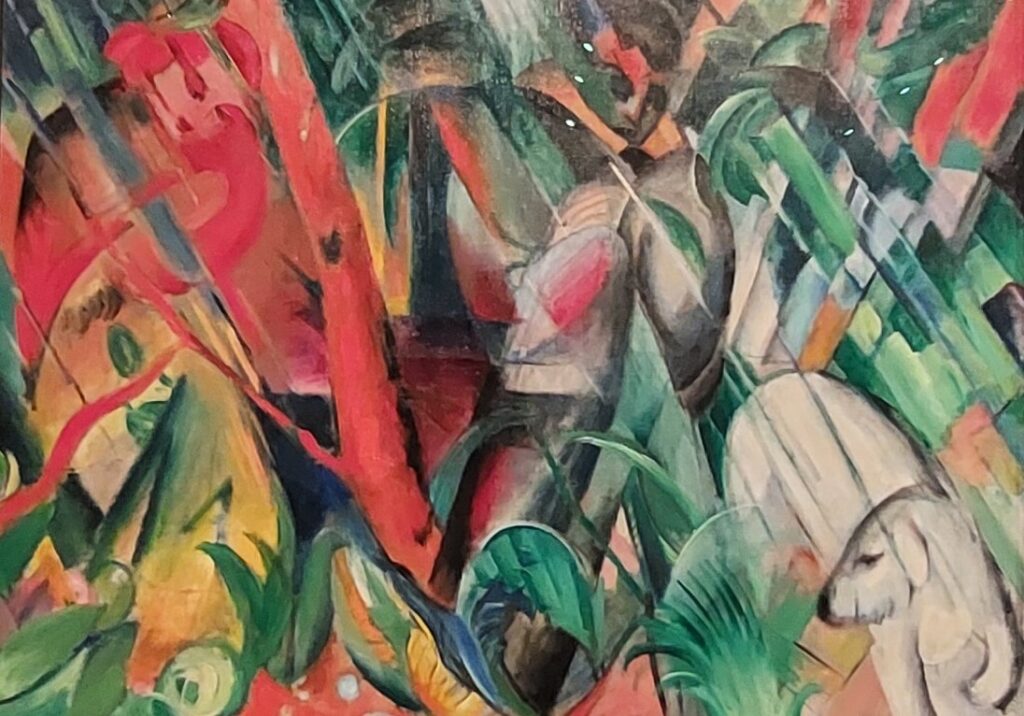
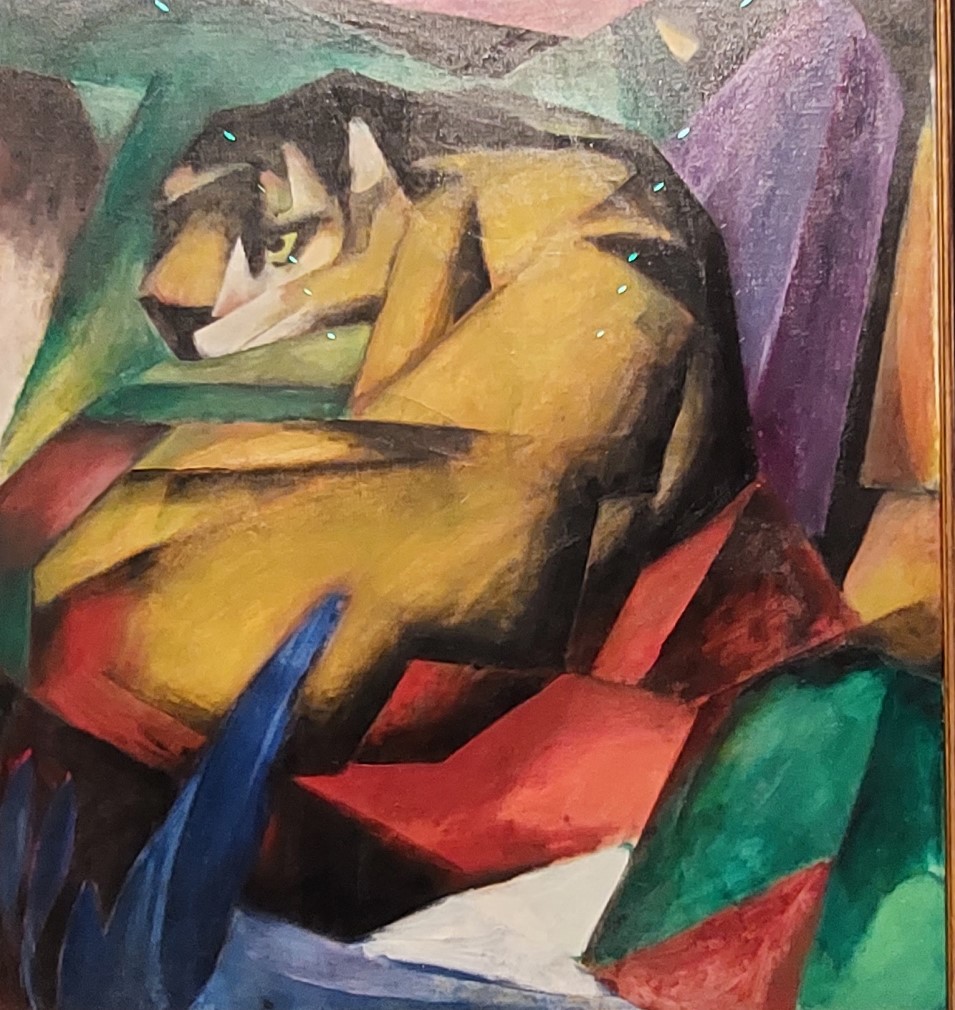
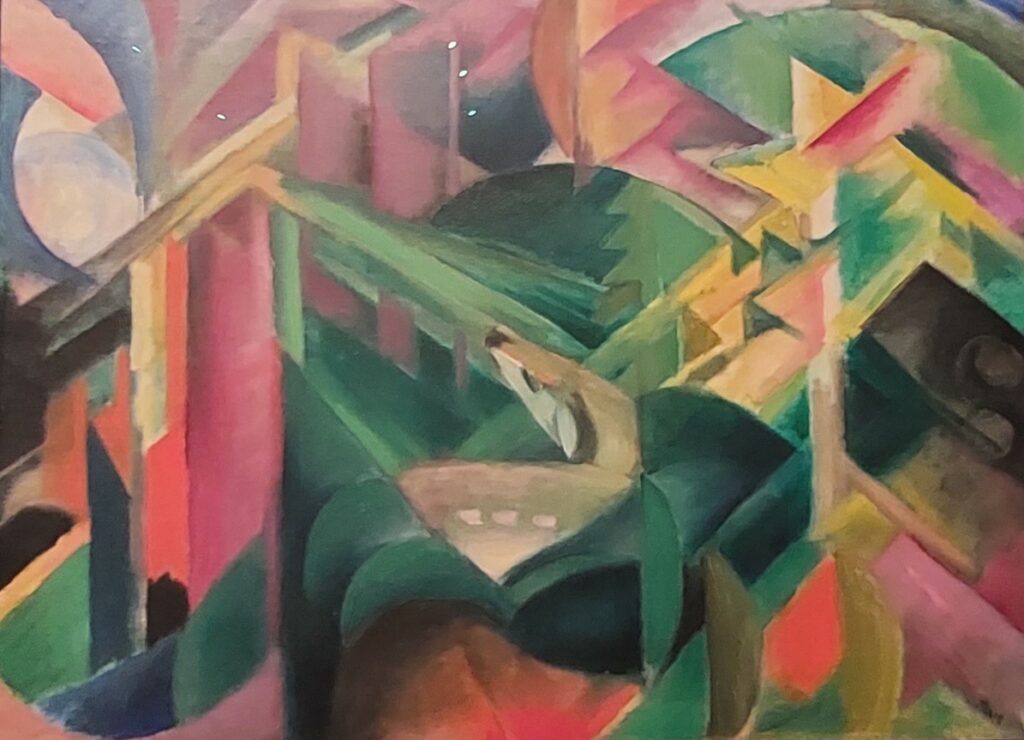
The works of his partner Maria Franc, colourful settings of family life, are delightful. Also life in Macke’s towns and parks reflects a happy, prosperous, bourgeoisie world. They seem to have been a joyful, and optimistic group of friends, lending a poignancy in view of the horrors waiting just a few years after.
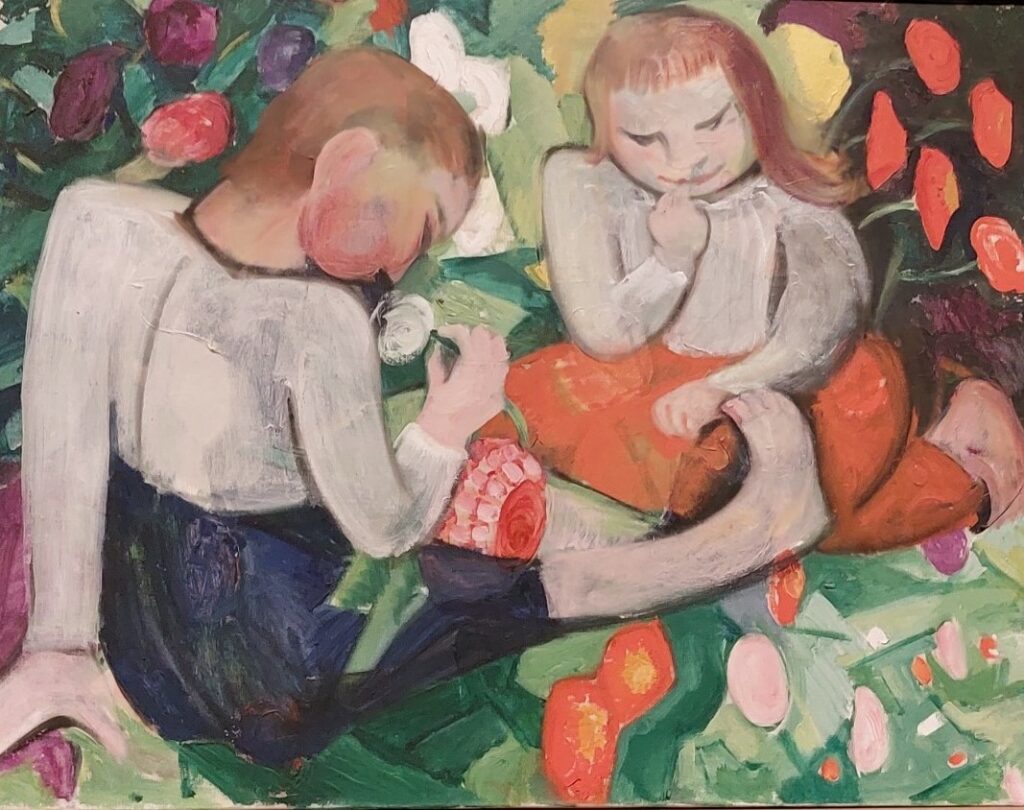
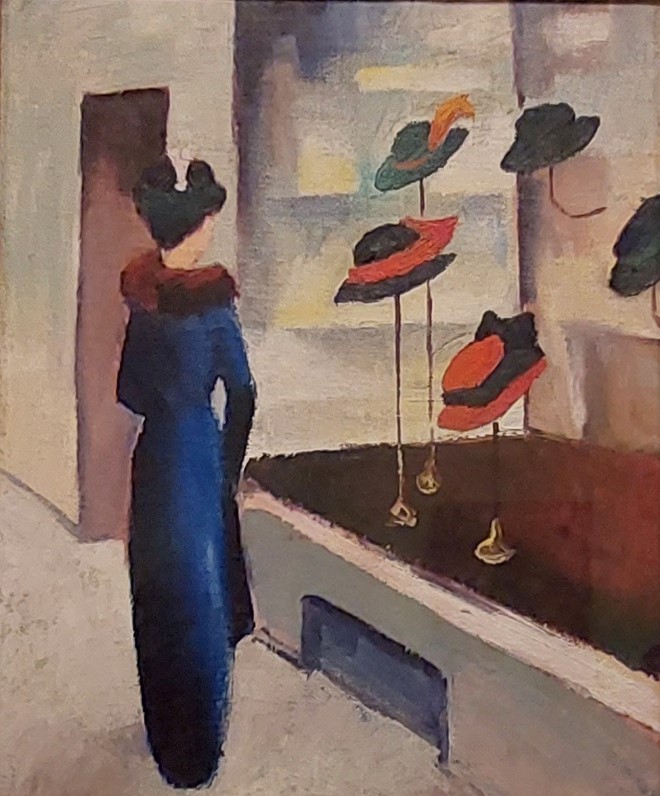
The woks of Jawlensky and Werefkin are bold and colourful too, their glowing landscapes unworldly. Their mask-like portraits are striking. Werefkin often works with a much darker palette than the others. Viewed from across the room, The Storm looks very abstract. The engulfing wave looks like a wild animal rearing over the dark cliffs.
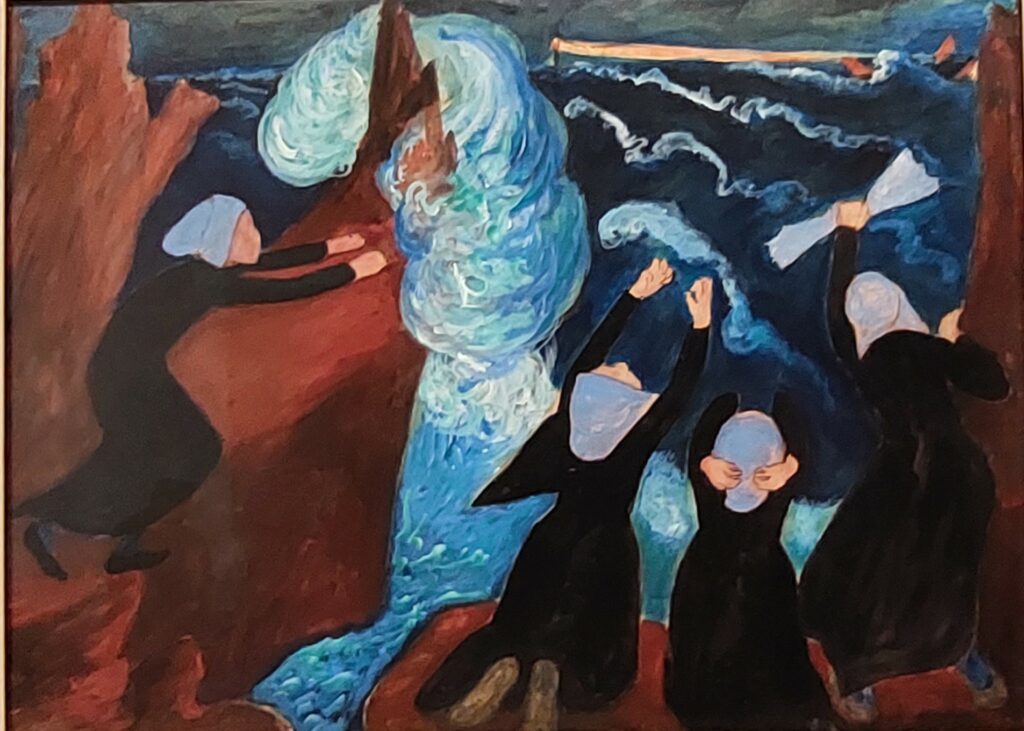
The Blue Rider group was destroyed by the war. Both Mark and Macke were killed. I wonder how they would both have developed as artists had they survived. Werefkin after Jawlensky’s death did not paint again. Kandinsky left Bavaria, and after the war became an influential teacher at the Bauhaus. He continued to paint but his later works lack for me the verve and passion of the Blue Rider days.
In my painting, my love of colour is the dominant feature. I respect line and form. I hover over borders with the abstract but never quite land. Figurative elements linger. The impact of this exhibition reinforces these aspects in every way.
